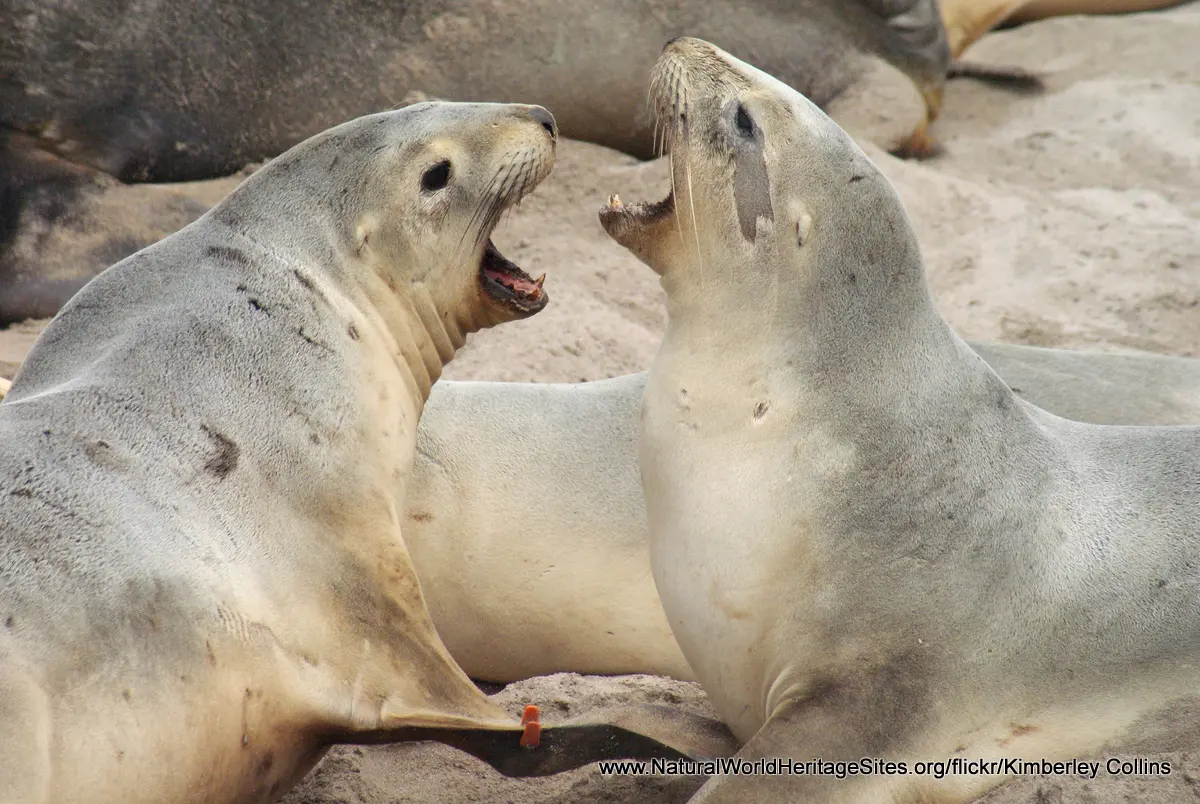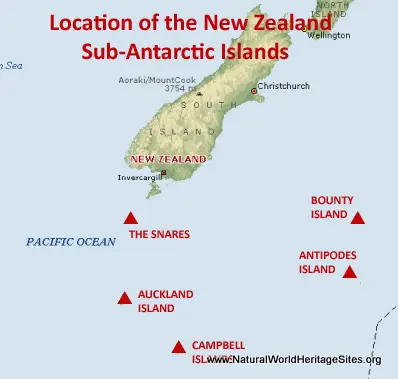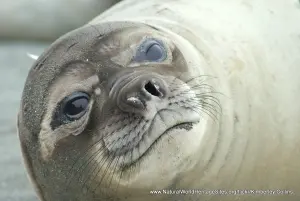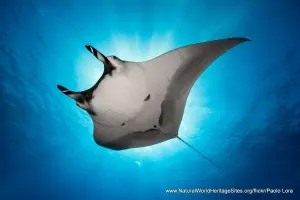EXPLORE New Zealand Sub-Antarctic Islands with this slideshow, check the location map and get all the facts and information below.
For slideshow description see right or scroll down (mobile). Click to view slideshow
Location and Values: The New Zealand Sub-Antarctic Islands are spread across the ocean in five groups to the south and south-east of New Zealand. They are remote, wind-swept islands that lie on a shallow continental shelf, up to 1,000 km from each other. The total land area of all the islands is 765 km2, with each island group surrounded by a protected marine zone for 12 nautical miles, so the serial site covers a total area of 14,765 km2 (95% of which is ocean). The islands support the most diverse community of seabirds in the world (including eight endemic species and 10 of the world’s 22 species of albatross), with 15 endemic species of land birds including snipe, parakeets and teal. Other taxa, including plants, marine species and terrestrial invertebrates exhibit similarly high numbers of endemic and threatened species. The islands are especially notable for their breeding colonies of pelagic seabirds, penguins and New Zealand sea lions (the world’s rarest sea lion).
The New Zealand Sub-Antarctic Islands provide a living laboratory for the study of evolutionary processes within and between islands in each group, and across the wider geographical spread of the five groups. Unusually large herbs (so-called ‘megaherbs’) are a peculiar feature of the islands (shared with nearby Macquarie Island) which demonstrate how plants have adapted to the extreme climatic conditions prevailing on the islands, with their perpetual cloud cover, low levels of solar radiation, frost-free, windy environment and soils rich in nutrients (derived from seabird faeces).
Conservation Status and Prospects. According to IUCN’s Conservation Outlook Assessment (2020) the conservation status of the New Zealand Sub-Antarctic Islands is ‘good’, thanks largely to their isolation and high level of legal protection. The IUCN report notes that management of the site has been progressively improved in recent years with the creation of additional marine reserves, ambitious programmes to eradicate invasive introduced species, strengthened biosecurity protocols (to prevent new alien introductions) and a robust research programme. Overall, the level of threats to conservation of the site remains low, although climate change and invasive species are significant ongoing risks.
Links:
Google Earth
Official UNESCO Site Details
IUCN Conservation Outlook
UNEP-WCMC Site Description
Birdlife IBA
Slideshow description
The slideshow illustrates some of the plants, animals and main features of the New Zealand Sub-Antarctic Islands with a portfolio of photos from the Auckland, Antipodes and Snares Island groups by Kimberley Collins. The majority of the photos are from the Auckland Island group, starting with some general landscape views, followed by nesting albatross on the steep grassy slopes overlooking the ocean. Several images of the endangered yellow-eyed penguin are included (30% of the world population breeds on the Auckland Islands), before a longer series on New Zealand sea lions (the world’s rarest sea lion, 95% of which breed on the Auckland Islands).
A couple of further landscape views introduce some of the unique flora and fauna, including photos of several of the islands’ endemic land birds – red-crowned parakeet, Auckland Island teal, Auckland Island pipit, Auckland Island banded dotterel and Auckland Island snipe. Some interesting images of ‘megaherb’ vegetation communities are included, followed by some images of the Antipodes Island parakeet. The final part of the slideshow covers the Snares Island group, with its giant tree daisy forests, a remarkable type of vegetation which is essentially unmodified by humans or introduced animals. One of the most prominent species found on these islands is the endemic Snares Island penguin, which appears alongside photos of other residents – a New Zealand fur seal and Antarctic tern.
Factfile
Website Category:
Islands;
Area: 14,765 km2 (including 765 km2 land area)
Inscribed: 1998
UNESCO Criteria:
- Ecological processes (ix);
- Natural habitat for biodiversity (x);
- Significant number of rare, endemic and/or endangered species (x)





